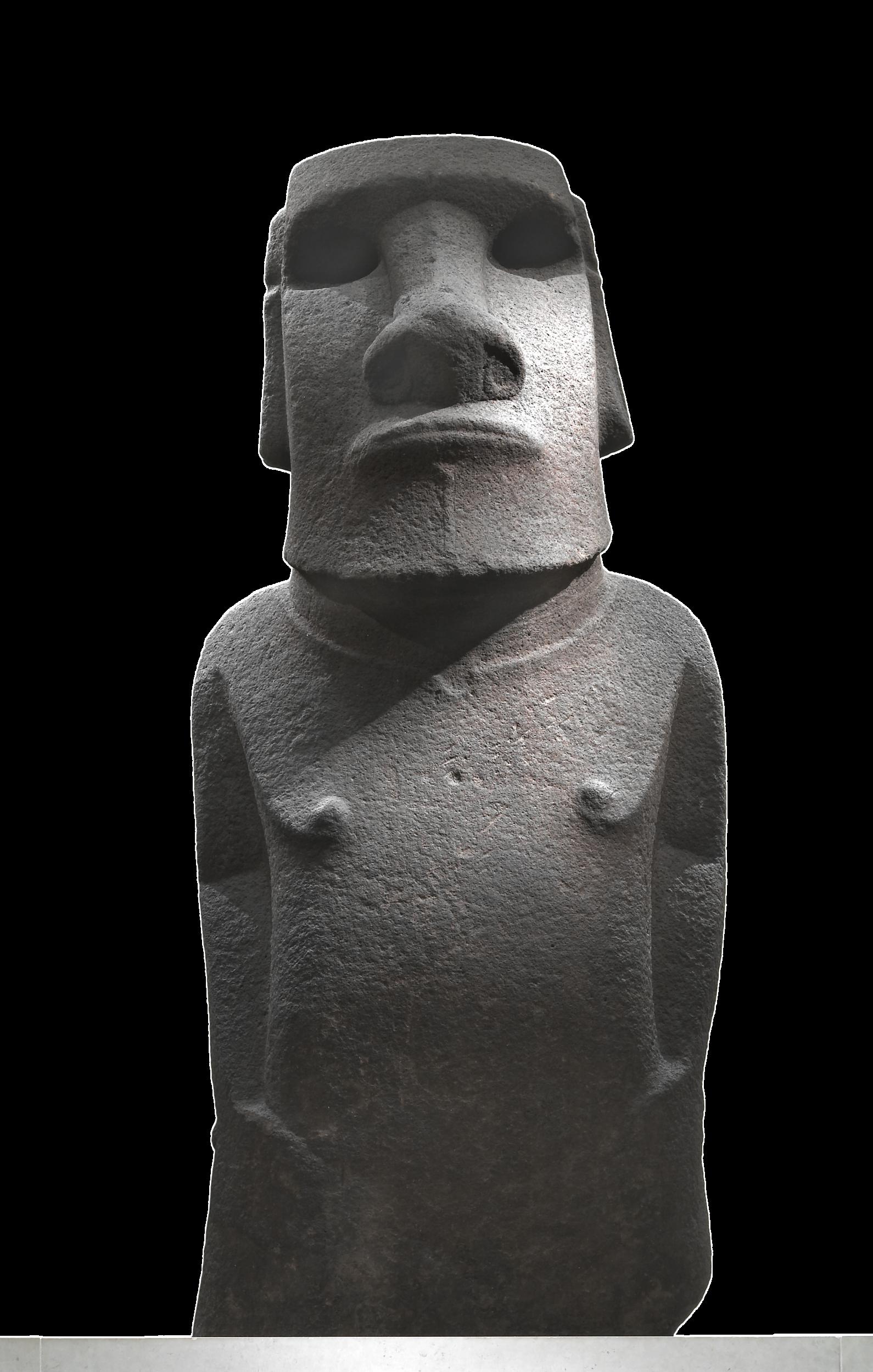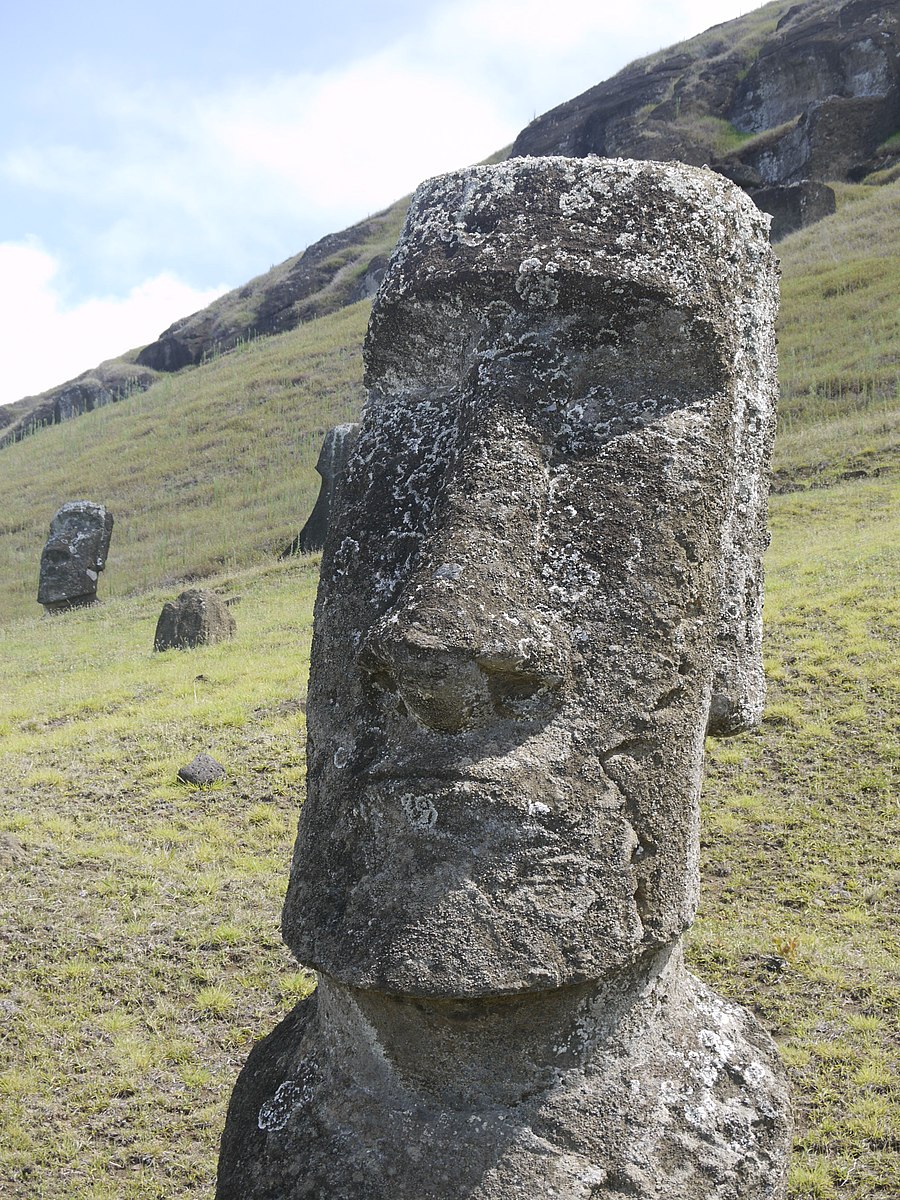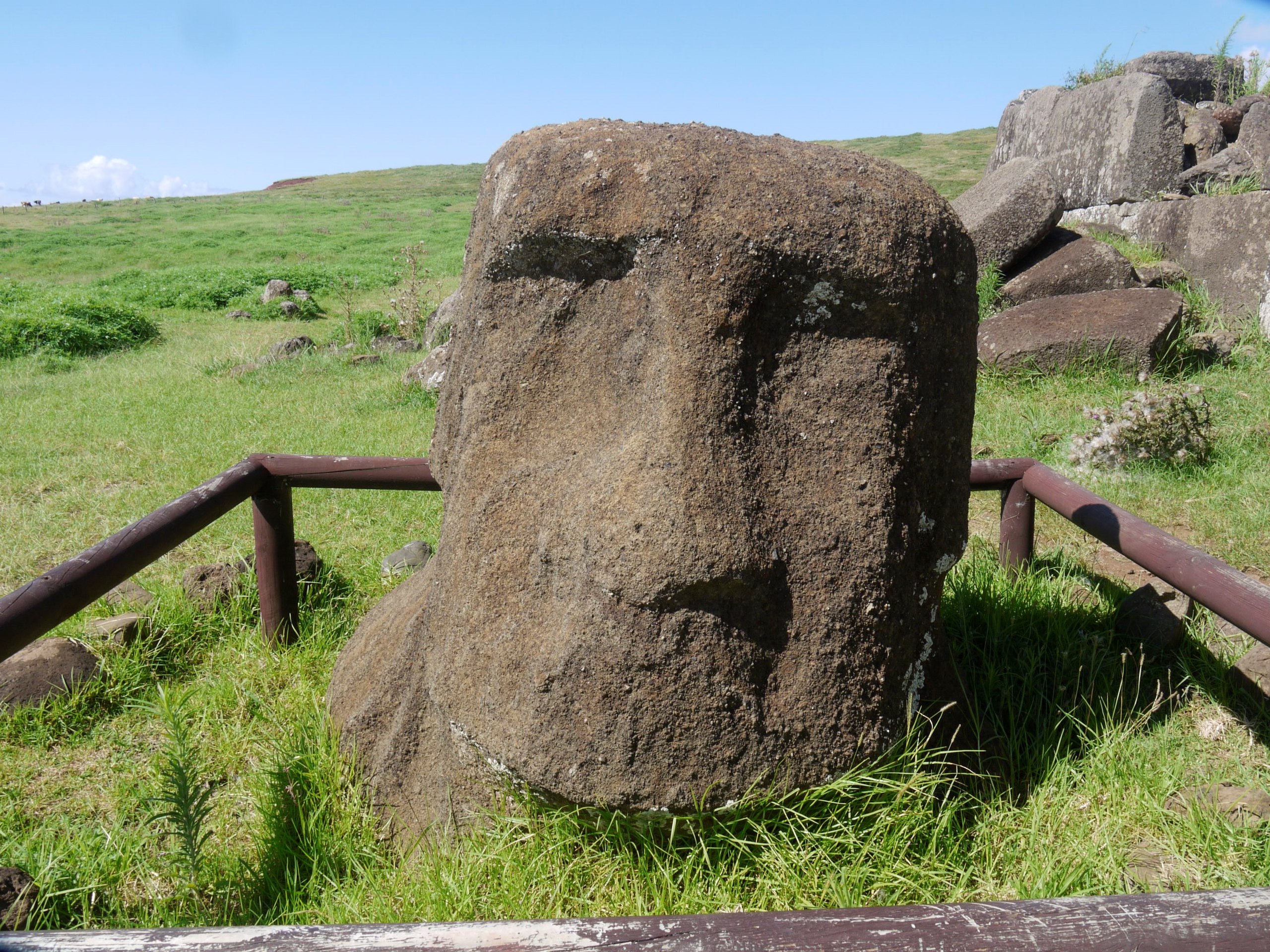Moai on Easter Island



Annotation
The Moai are large statues on Easter Island in Oceania, known for their distinctive head and facial features. The moai were created by the Rapa Nui people likely between 1250 and 1600 CE. The moai have distinctively large heads and disproportionately small bodies and are often called the “Easter Island Heads,” despite most having bodies. The faces have characteristically large noses and chins, and deep eye slits that were designed to hold eyes made out of coral, with pupils made from either black obsidian or red scoria. As the moai do not have eyes currently, the discovery of this decoration came from fragments of white coral found at different sites across the island. The bodies of the moai are generally squatting, with the arms in a resting position; they lack legs. Some of the moai were thought to have been painted. Newer moai have topknots, called ‘pukoa’ on their head, with the hair representing ‘mana’ or the supernatural force of the universe.
The statues represent deceased ancestors and the power of the chiefs, who were believed the be directly descended from the gods. Most are situated on platforms called ‘ahu’ and the statues average around 13 feet, though they range from 8 feet to almost 70. Scholars are uncertain how the islanders moved the statues; the currently accepted theory from scholars suggests they were ‘walked’ by rocking them back and forth. Islanders’ oral stories talk about how the statues were moved supernaturally, with someone commanding them to walk. Experiments from scholars in ‘walking’ the statues by rocking them have proven it could be possible to transport them as far as needed. Easter Island is now deforested but would have had forest over during the centuries the moai were built. Other theories for transportation include using wooden sleds to move the statues; currently, islanders use sleds to move stones.
The moai tradition was already in decline following European contact first in 1772, but later decades saw increased conflict and violence between islanders. The conflict saw many moai toppled by different clans, corroborated by the oral histories of the Rapa Nui people. All were toppled by 1868 according to European reports. After the slave trade began in 1862 and decimated the native population, along with missionaries coming to the island and forcing assimilation of the islanders, the toppled moai were left.
Today at least ten moai have been restored and reside abroad in museums such as the British Museum and the Louvre. There are also replicas at other museums. On Easter Island, moai have also been restored, with an important site called Ahu Akivi, a sacred site on Easter Island with seven restored moai.
The Hoa Hakananai’a, seen in the first attached image here, is a moai from the Orongo village on Easter Island and is considered one of the best examples of the rapa nui sculpture practice despite being small. The moai was taken by a British ship crew in 1868 and is now housed in the British Museum. The name was recorded by the British crew and may mean ‘breaking wave’ or ‘hidden friend,’ among other possible translations. This moai has relief carvings, similar to petroglyphs, on the back of the statue, that is likely associated with the island’s birdman cult
The spirit is considered to have been stolen by the Rapa Nui people and there are pushes for repatriation from the British Museum.
Credits
"Figure," The Trustees of the British Museum, 1000-1200 CE, Easter Island, https://www.britishmuseum.org/collection/object/E_Oc1869-1005-1